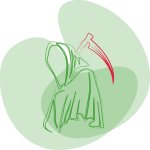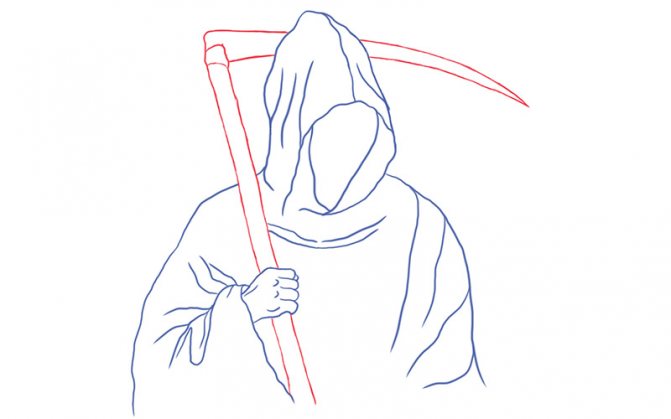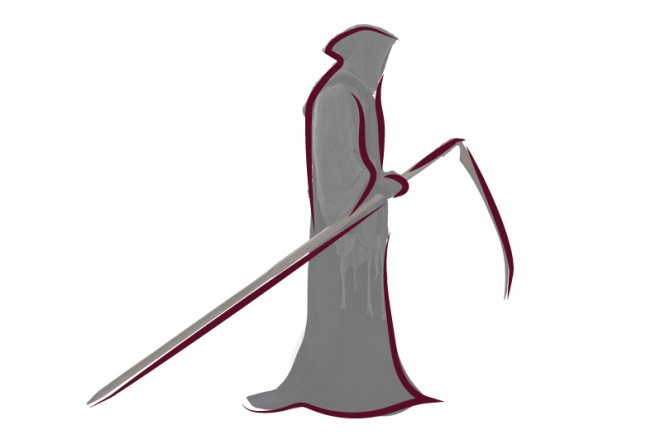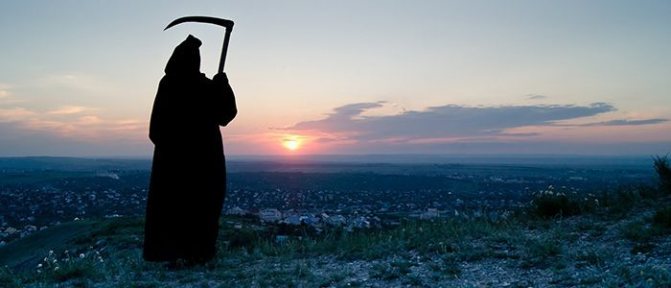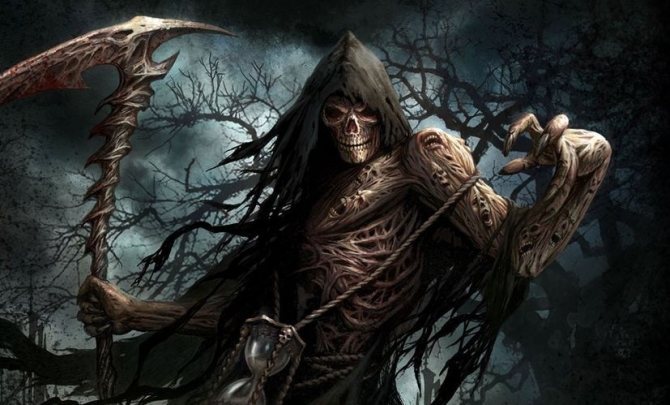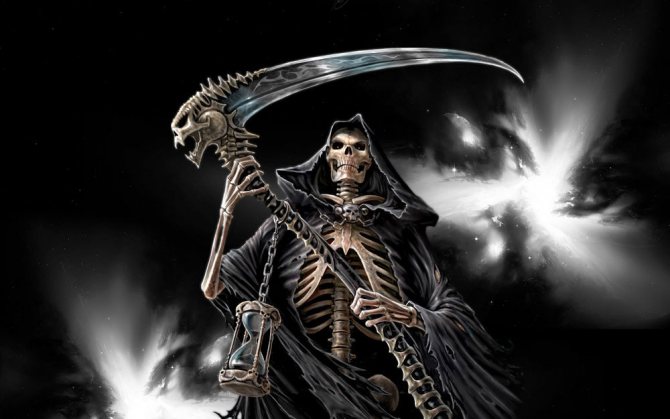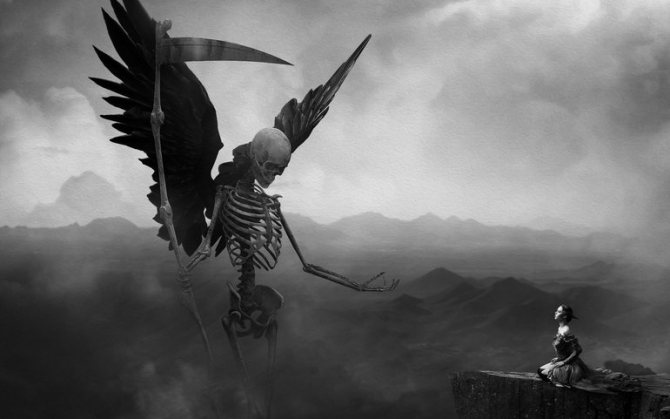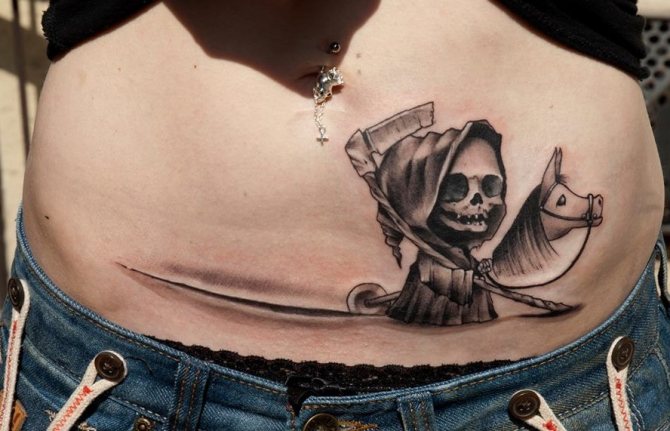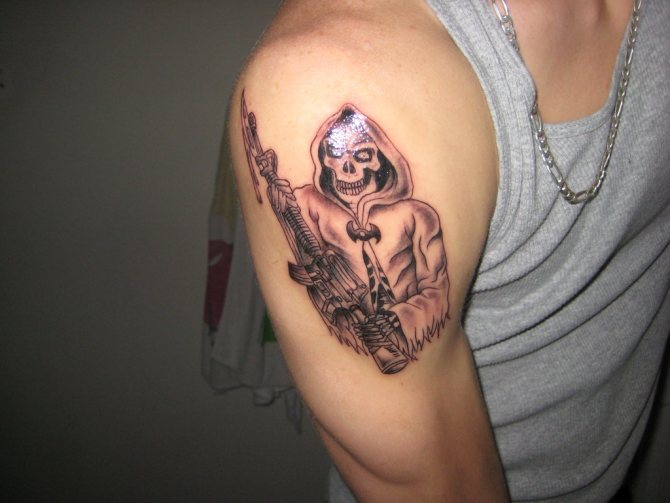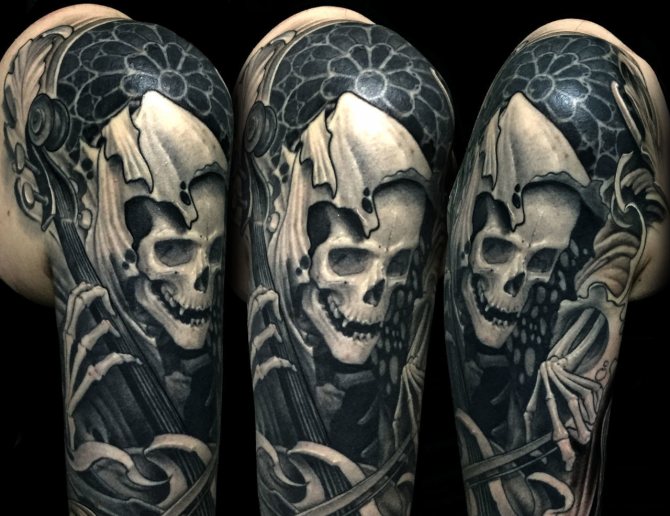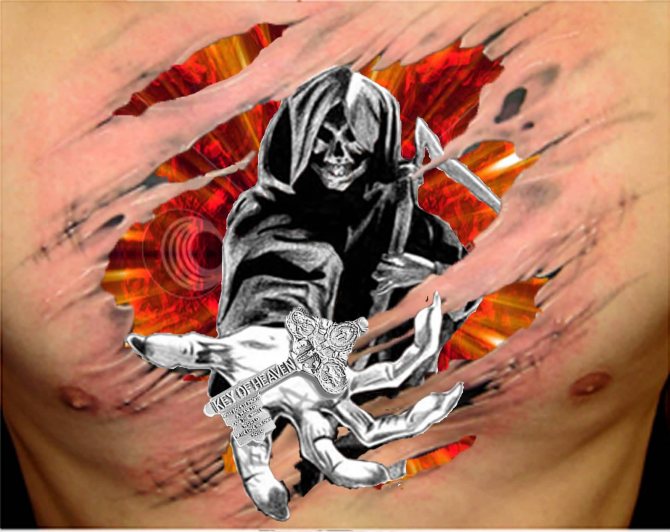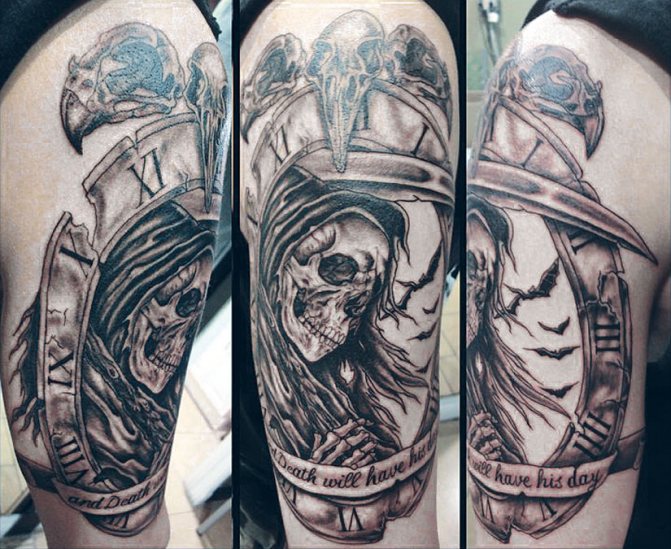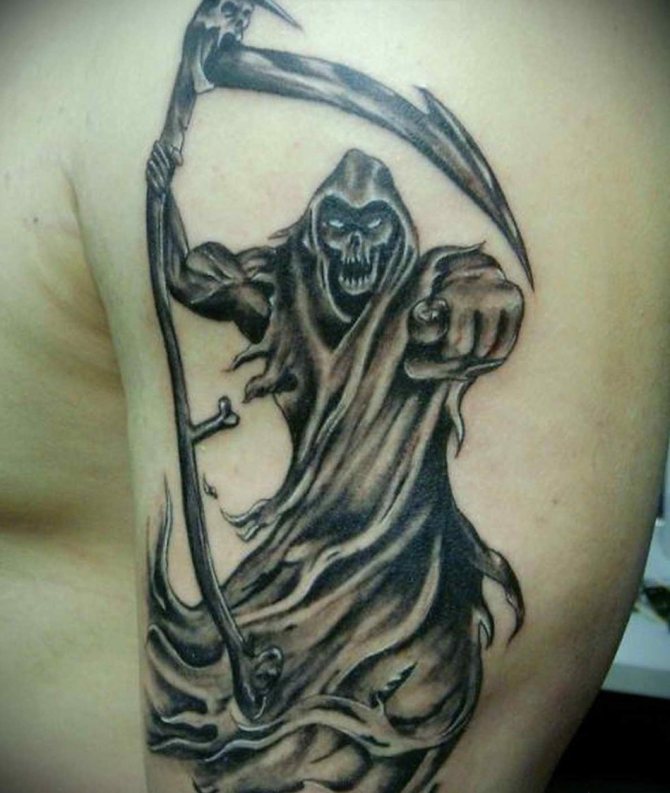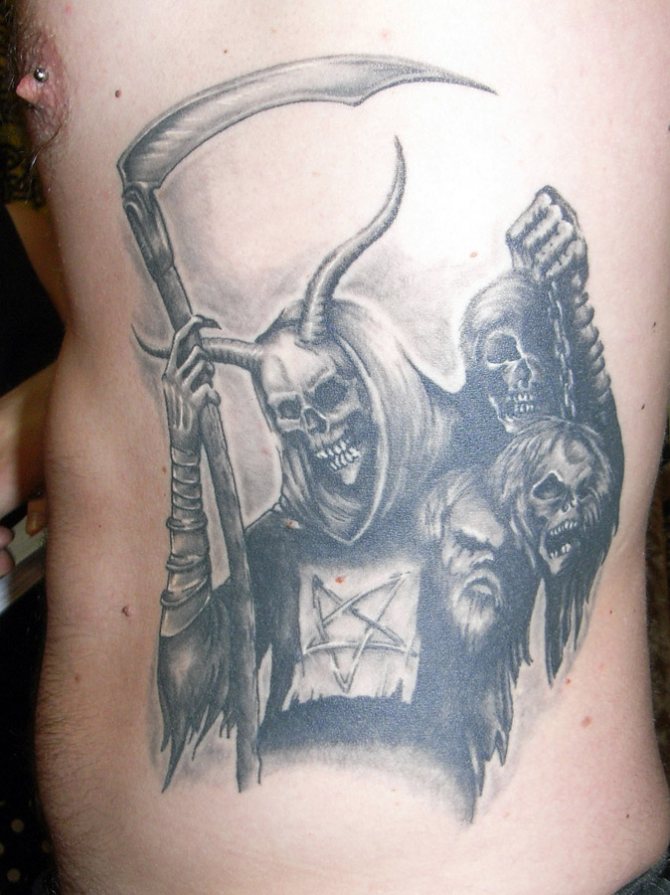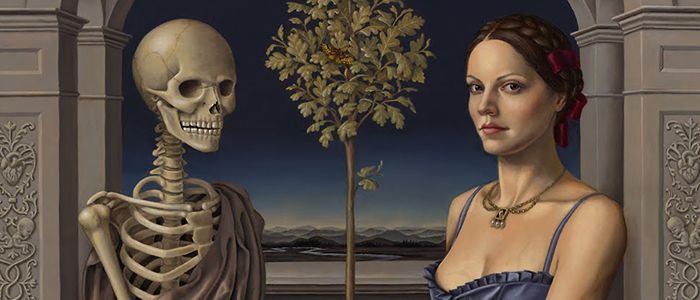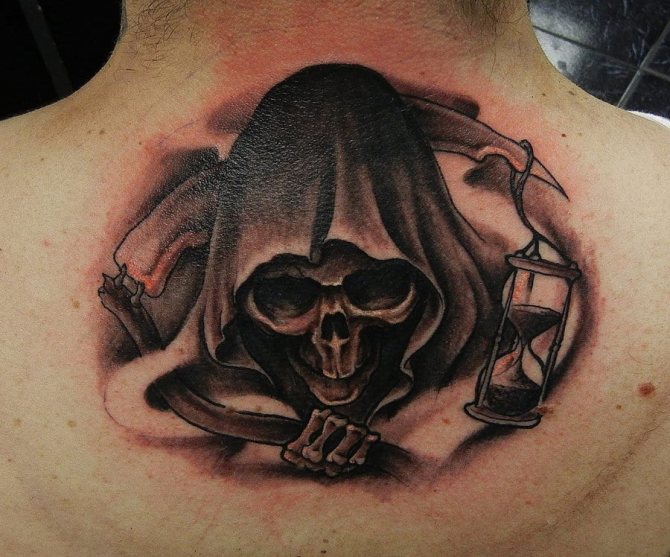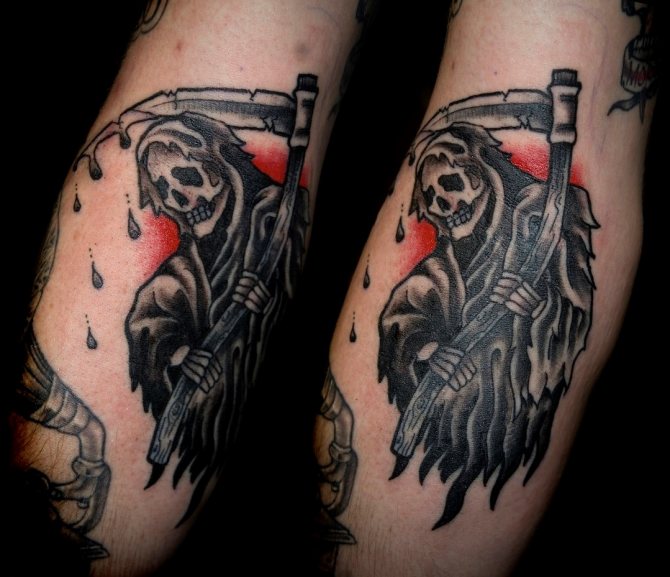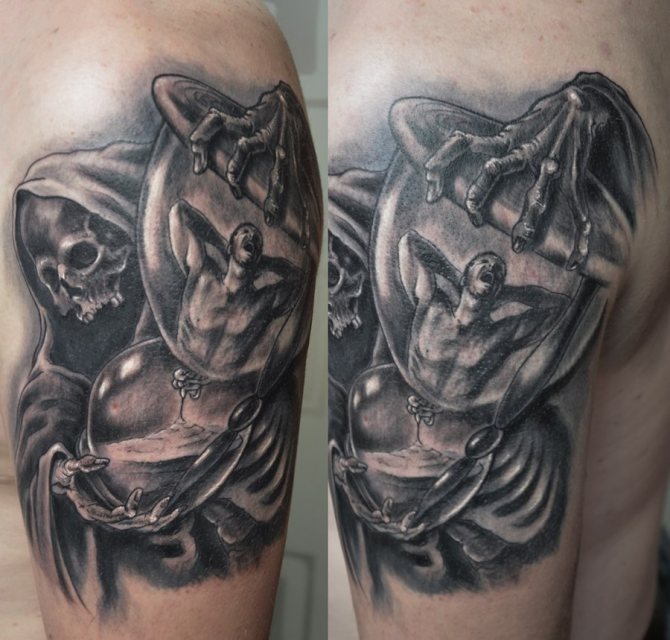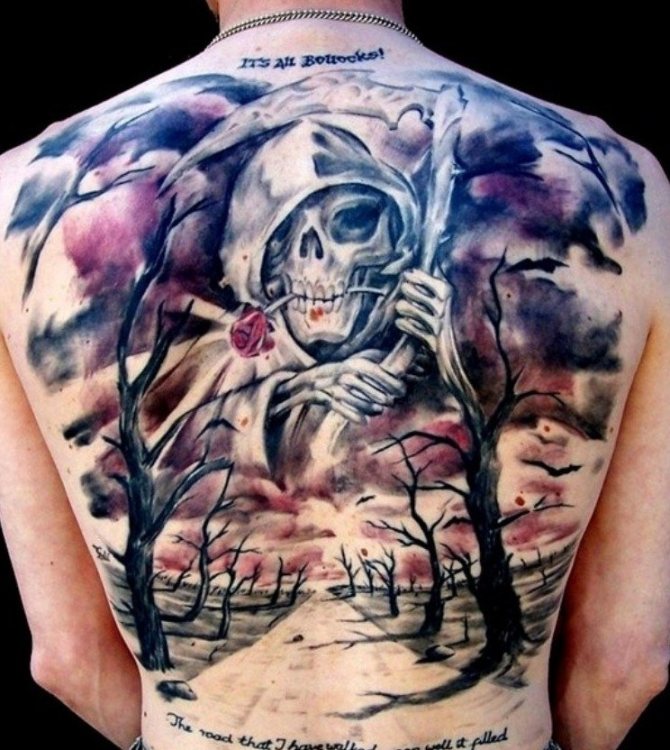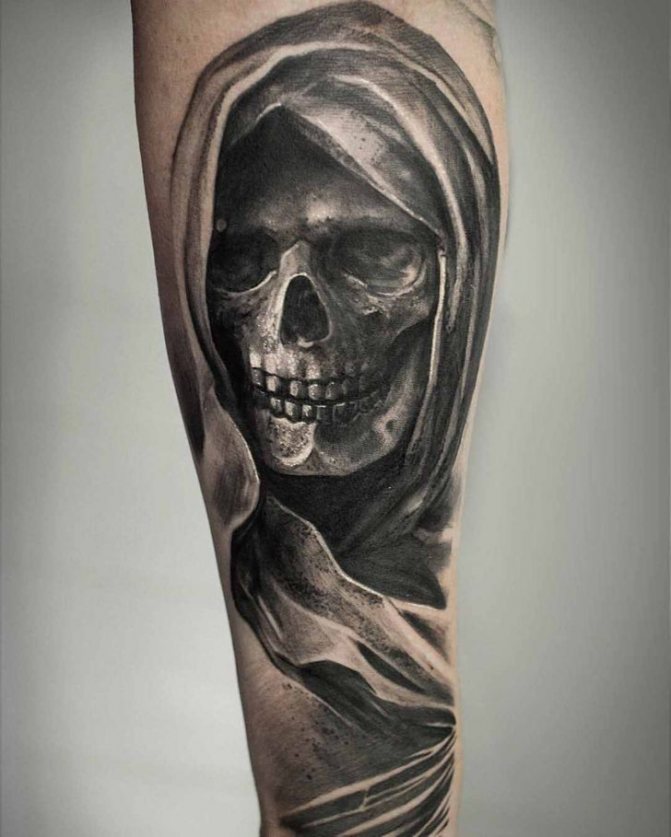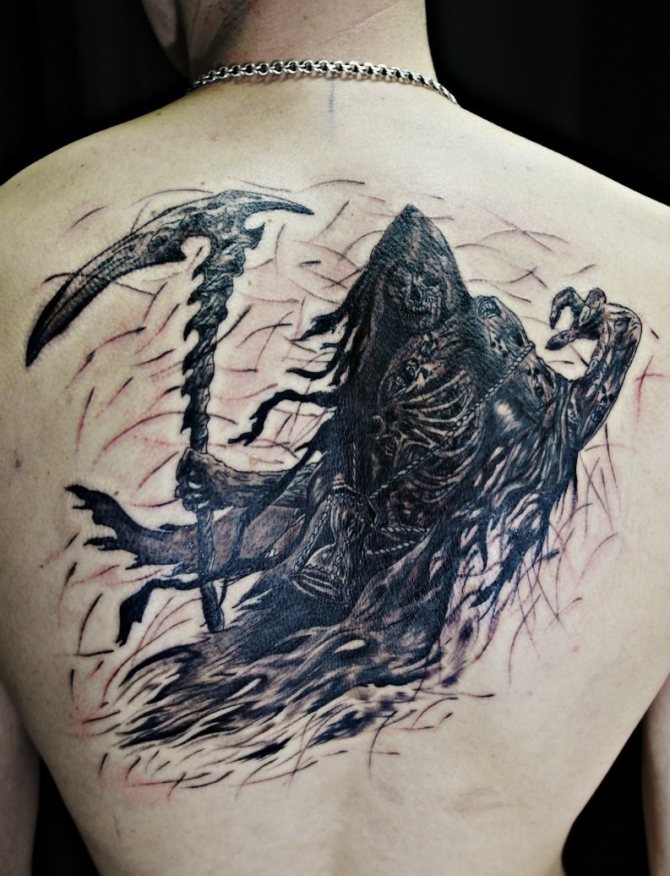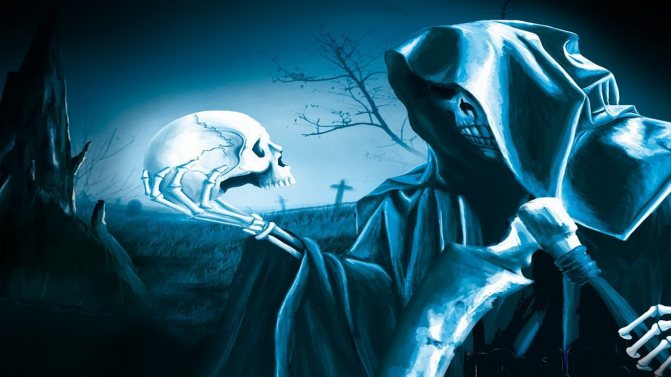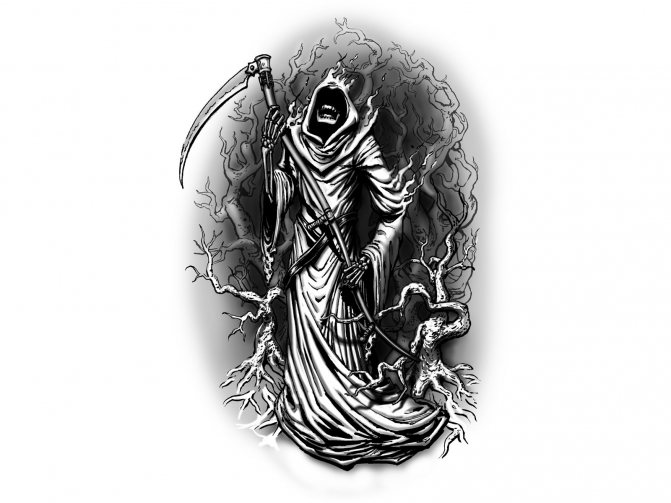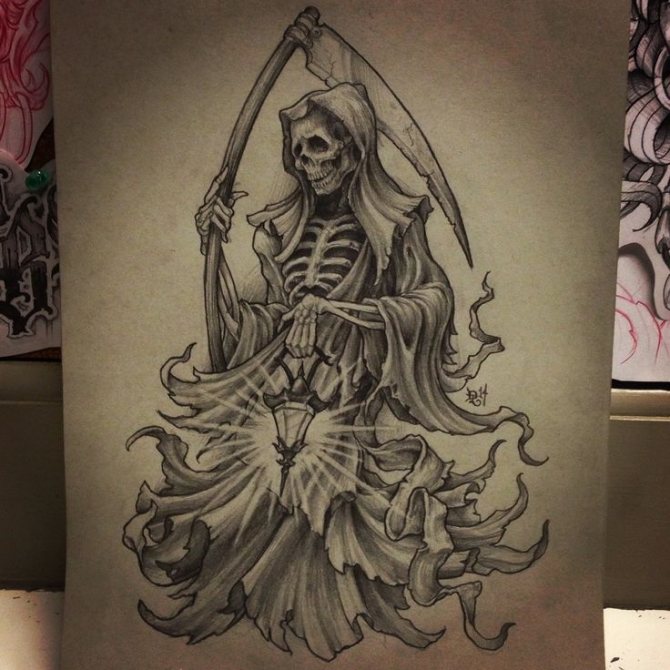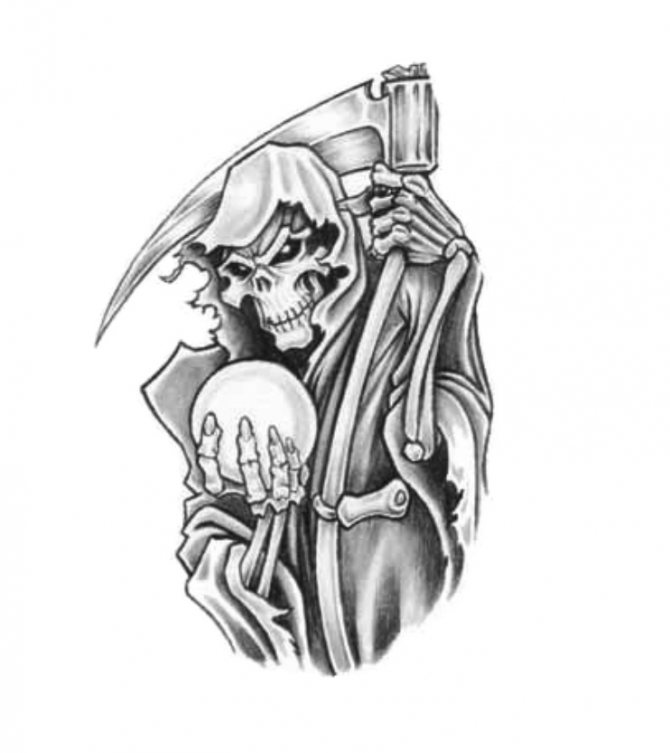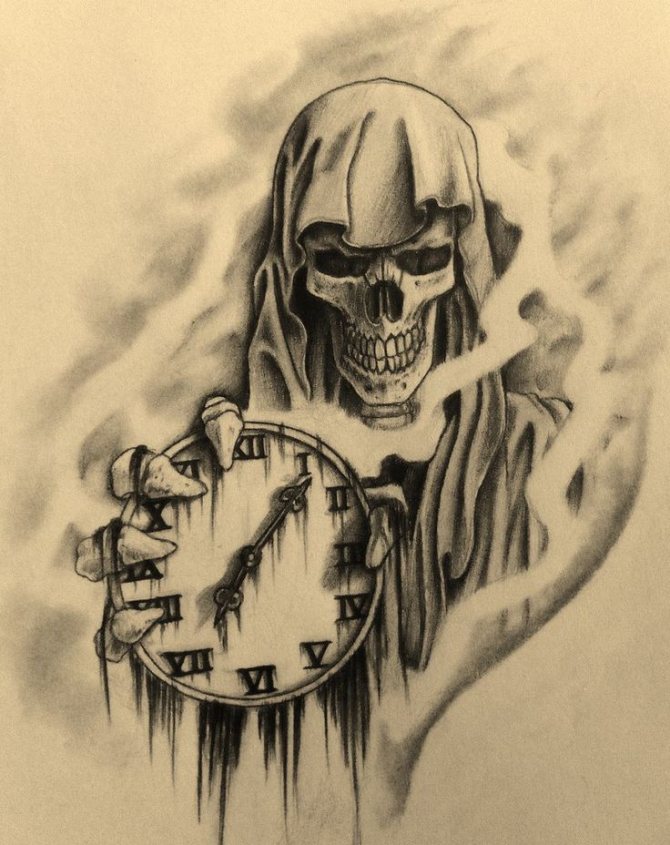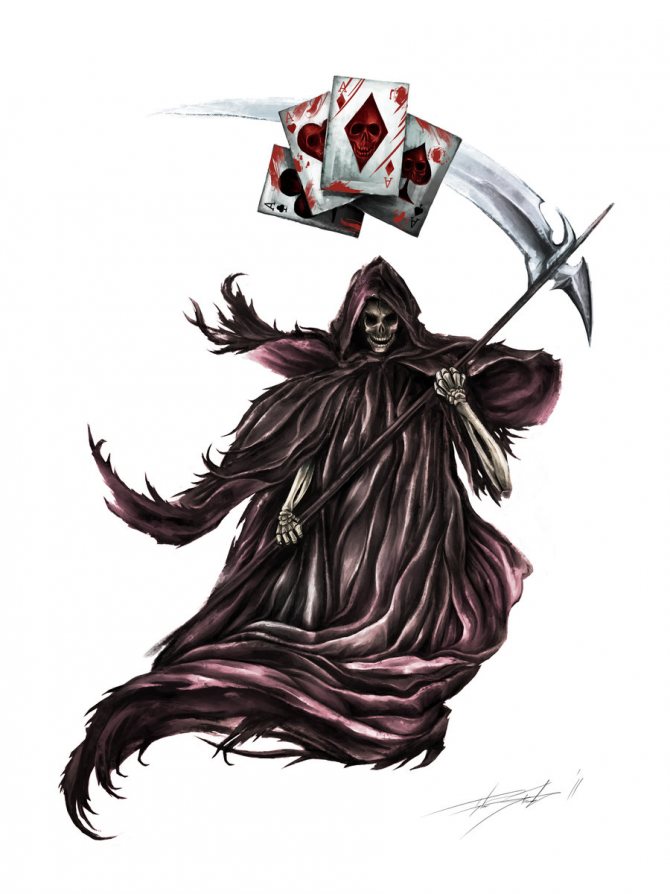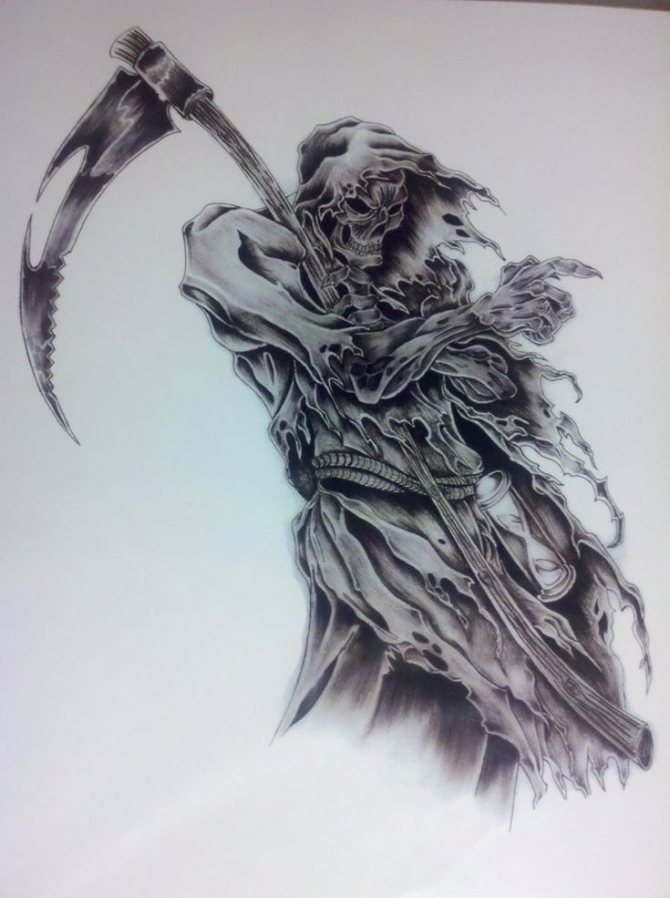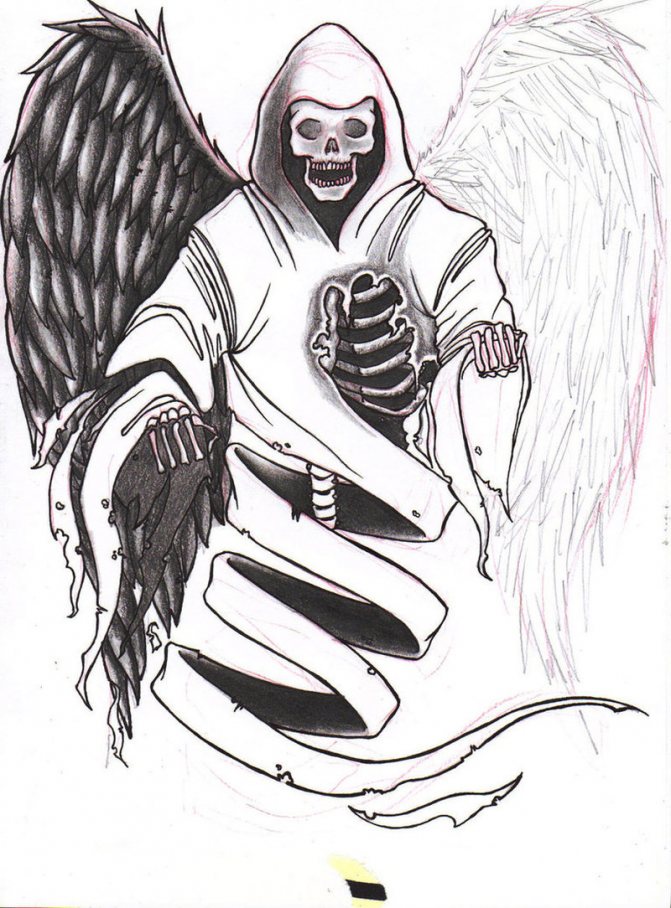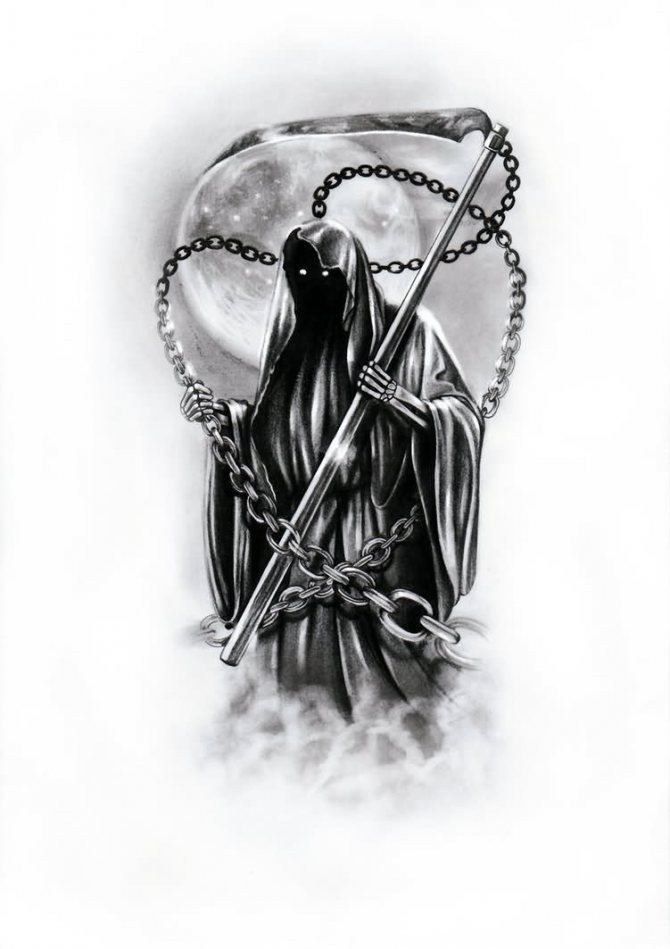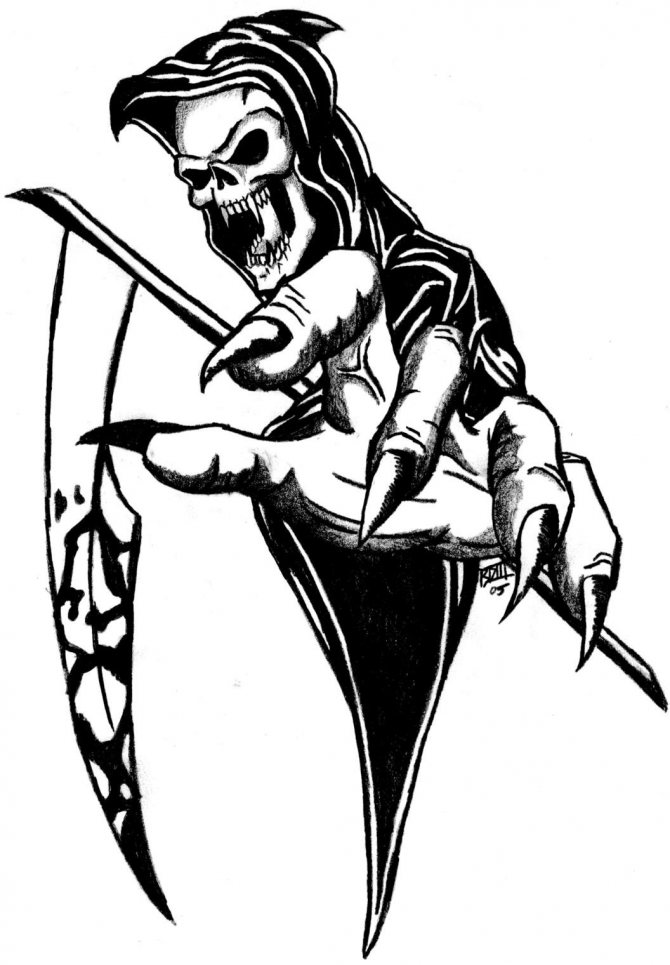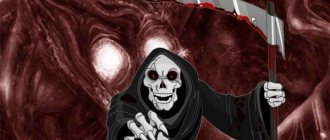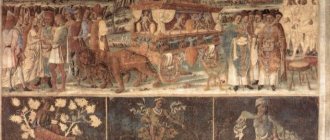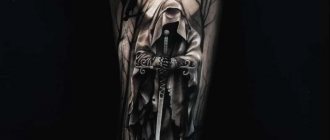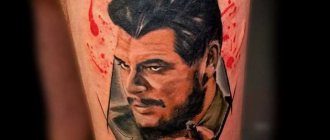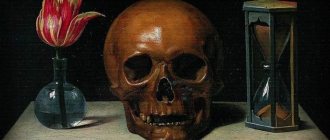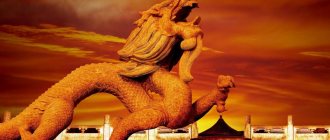The most common, we can say, the clichéd image of death in the modern mass consciousness is someone in a spacious black robe with a hood hiding his face and a sharp scythe in his hand. Such a symbolic figure is several hundred years old, but it, like its armament, has even more ancient predecessors.
Death as the eternal companion of sowing and reaping
To the first Neolithic agriculturists goes back the notion that sowing is the "funeral" of grain, as if it were dead, giving no outward signs of life. Thanks to the miracle and magic of the fertile earth, it would sprout, spike, mature, and "die" again at harvest. This is how the cycle of birth and death, similar to the human life cycle, was closed.
In ancient Egypt, the deity who, according to tradition, was dismembered and miraculously resurrected was Osiris. At a festival dedicated to his death and resurrection, an image of the god made of clay and grain was buried in the ground with funeral rites. This was done so that, having perished, Osiris could come back to life with a new harvest.
Rites aimed at ensuring fertility at the cost of someone's death and burial were far from always symbolic. It is known, in particular, that the body of the drowned Norwegian king Galfdan the Black, "blessed with abundance", was dismembered and buried in different parts of his kingdom in order to ensure rich harvests in these lands.
Death, figuratively and literally, has accompanied the circle of agricultural work for many centuries, closely correlated with the time of sowing and harvesting.
Who is Death: The Opinion of Mankind...
Biologically speaking, death is the cessation of the functioning of the human body, the stopping of the heart and circulation. The term death is understood as the departure of a person into the other world, during which his soul leaves his breathless body.
But such an explanation has always been "not enough" for mankind, and people have sought to give an image to that which is important and which to a large extent remains a mystery. In this respect, death is perhaps the most unexplored thing in human life.
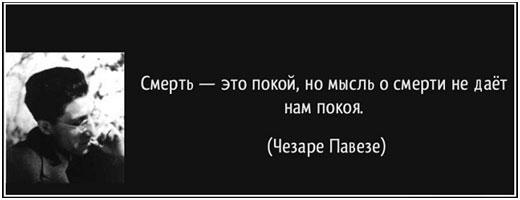
No one knows what awaits him after death, if at all. Death means something different to everyone, something from which there is no cure and no turning back.
That is why people have created a certain image of death, making death not a phenomenon or a process, but a human-like creature, which, according to beliefs, is supposed to send the soul on a further journey.
But such an interpretation of the question is not entirely correct. Scientists believe that death is rather the frontier of mundane life, a certain boundary that divides the known and unknown worlds. It is hardly a person, and probably not even a guide.
Nevertheless, images of death appeared long ago, and they used to be different, as people had multiple religions, or even were pagans. The most common one is a tall statuesque man or woman, or rather a skeleton of a man who is dressed all in black. In his hands he invariably has a scythe and a watch.
If it is possible to understand what the watch is for, after logical reflection, then it is more difficult to imagine what the scythe is for. And yet, why the scythe?
Sickle and scythe as a tool and weapon
The crescent-shaped tool with a sharp edge on the inside, mounted on a handy handle, was already in use in the Stone Age. Flint inserts with a sharpened edge were used. These harvesting tools were replaced by bronze, then iron sickles. At any technological stage they could become an effective and lethal weapon.
In ancient Sumer the sickle was transformed into a kopis, a weapon with a saber-type handle and a blade sharpened only on the inner side.
In Okinawa, after traditional edged weapons were banned there, modified rice harvesting sickles, kama, appeared. They were especially effective in close combat, but were also used as throwing weapons.
When the handle of the sickle was lengthened and the cutting blade enlarged, as before, sharpened only on the inside, a new agricultural tool appeared - the scythe. It cut the stalks of grass and cereals even more effectively, and in times of peasant uprisings it became a formidable weapon.
What is she: an old woman or an old man?
In ancient Greek and Roman mythology, death appears as a a man with an indeterminate age. However, there are opinions that she has female face. Such a theory is based on the assumption that this whole image is created in opposition to life:
- Life is a symbol of fertility, while death is figurative of harvest;
- The living person is always fresh and blooming, while death is depicted as a skeleton devoid of vital energy;
- Death betrays before us the old, for it is this state of withering that is closest to it;
- The symbol of life is God, and in contrast, the symbol of death is the woman.
There is another version of the female essence of the mythical hero. It proceeds from the fact that Only a woman is capable of giving life to a man and only she has the right to take it away.
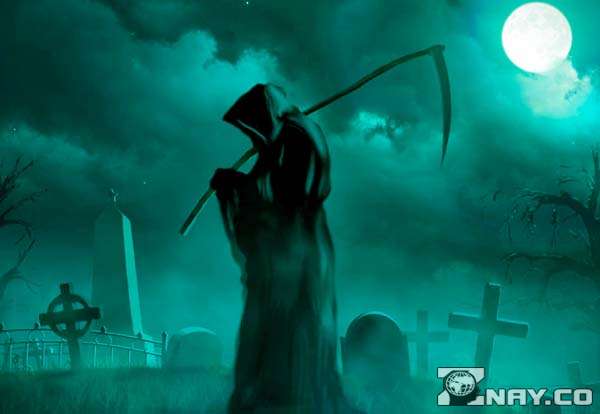

Thus, the question of why death is depicted with a scythe can be pondered from different points of view. Perhaps this image is of divine origin, or perhaps this attribute was attributed to her by peasants from a lack of choice. In any case, this colorful image even in modern times frightens people and makes them think about the transience of life.
The Grim Reaper of Plagued Europe
During the plague epidemic of the 14th century the "Black Death" devastated Europe, seemingly mowing its population to extinction. That was when the Grim Reaper in black mourning robes and a sharp scythe appeared as a tool for reaping souls as they departed to the next world. As in ancient agricultural cults, he cut off life from its roots, used the instrument-attribute, like Saturn, and turned it into a deadly weapon, as many and many farmers had to do for centuries.
At the same time, the Bible repeatedly uses the harvest as a symbol of retribution for the sins of men: "And the angel threw his sickle into the earth, and cut down the grapes on the ground, and cast them into the great sink of the wrath of God. And the berries are trampled outside of the city, and the blood came out of the lathe even to the bridles of the horses, for a thousand six hundred stadia" (Revelation 14: 18 - 20).
The grim reaper with a sharp scythe has become a capacious embodiment of death, combining in itself echoes of ancient cults, historical events and biblical revelations. As a vivid metaphor for the end of earthly life, this dark figure, including its female incarnation, lives on to this day.
It also spread in Belarus, where it was originally believed that death was ruled by Mara. This goddess ruled birth and fecundity simultaneously, i.e. she tied the world of the living and the realm of the dead in a tight knot that united all people from the beginning of time.
The parable of how death got the need to carry a scythe
I will tell you a short folk story that tells why death carries a scythe.
A long time ago, death turned to the local blacksmith with a very unusual request - to fix and sharpen the scythe. The smith did not immediately turn around when he heard the woman's voice and wanted to refuse the man's request. But when he turned around, he lost his desire to refuse.
The blacksmith thought that death had come directly after him; he even assumed that he was already dead. But death reassured the man by telling him that he had only come to tweak his tool a little.
While the blacksmith was sharpening and mending his scythe, death waited quietly in the corner of the room. Then the blacksmith couldn't help asking a question that bothered him. He asked how many people had been killed by the tool he held in his hands. Death had expected the question, but it clearly angered her.
She explained that she had long since given up the need to kill, and, in fact, that she had no such need. Her job before was to meet a man and escort him to the next world. At that time, she was a beautiful young girl who escorted the souls of the deceased to the world of rest.
But then she told other, very cruel things. More than once Death has seen people kill each other out of anger or greed. She has seen wars, quarrels, and quarrels. She no longer had to accompany people who came in peace. Now her new visitors were bloodthirsty murdered people, and it forced her to change her clothes to black robes that would not show the stains of blood and traces of human torment.
She had changed from a beautiful girl to a horrible old woman who had long forgotten what it was like to accompany those whose time had come to heaven.
Finally, she also answered the blacksmith's main question. She said that the scythe was not the murder weapon at all, but only the opportunity to find the way to heaven, which had long been overgrown with grass.
This version of the appearance of the scythe in death did not emerge long ago - it is the one that most modern Christians are inclined to accept.
Question and Answer
Are there any explanations for the garment of Death in the traditional view?
Originally it might have been a white shroud, so that the image of Death was a skeleton rising from the grave in a funerary garb, a character of medieval "death dances". The shroud then became a black robe, which was said to allow Death to be present in the world of the living and remain unnoticed.
Has the Egyptian cult of Osiris always made do only with symbolic, bloodless sacrifices?
By no means always. The ancient Egyptian priest Manefon testifies that in order to improve the fertility of the soil there were sacrificed red bulls and red-haired people. Their bodies were burned and their ashes scattered from the altar of Osiris.
What attributes, besides the scythe, accompanied the traditional European image of Death?
An hourglass, as a symbol of the expiration of the time of life, as well as a sword instead of a scythe for visits to noble lords.
Other prototypes of death: is there something in common between them?
The familiar image of death in the form of an old woman in a black robe and with a scythe in her hands is not the only one.
Before, there were many gods or lords of darkness, whose images have also greatly influenced the modern view of death.
I will list the most famous of them:
- Morena - Slavic goddess of death, who always had a sickle in her hands.
- Anubis was the god of death in ancient Egypt. He was depicted as a man with the head of a jackal, who always carried a scale.
- Thanatos is the personification of death among the ancient Greeks. He also carried a sickle. With it he cut bundles of hair of the people, who had to leave this world. Also in Greek mythology there was another man associated with death - Hades. His task was to escort the dead along the river to his realm, the realm of the dead.
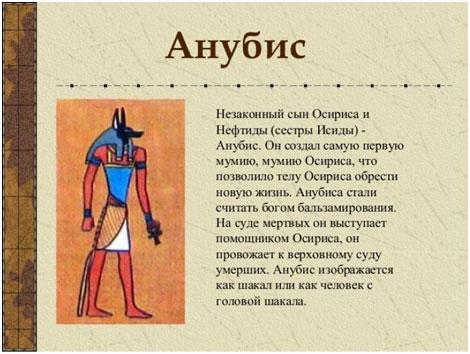

What does death really look like and what does he need a scythe for can be judged for a very long time. However, one thing is clear: only we ourselves and the fate written for us can influence the outcome of our lives. So let's not lose hope for the best, let's try to live as long and happy life as possible.
Is there life after death?
Versions of why death is a scythe:
Playing with death[edit]
Around the fifteenth century, the story of a man playing a game with Death coming after him began to spread in European culture. Usually the game was played in chess, which by that time had become very popular in many walks of life and was often used as an allegory of human life and society.
The image of the Death-chess player is depicted on many paintings, frescoes and engravings. It is not quite clear, however, why Death would play with the person she came to take away - but, apparently, an older story about the sinner's game with the Devil, where the soul was at stake, had an influence here. Also in some versions of the plot, chess with Death is played not by the dying person himself, but by someone else trying to win back his life. For example, in a painting by the French artist R.-F. Descartes, a doctor plays chess with Death for the life of a sick person - and wins.
On what part of the body to impose a tattoo
Such mystical tattoos are better placed on closed areas of the body. This is especially true for girls. There is no special beauty in them. Moreover, you can not fit into the dress code.
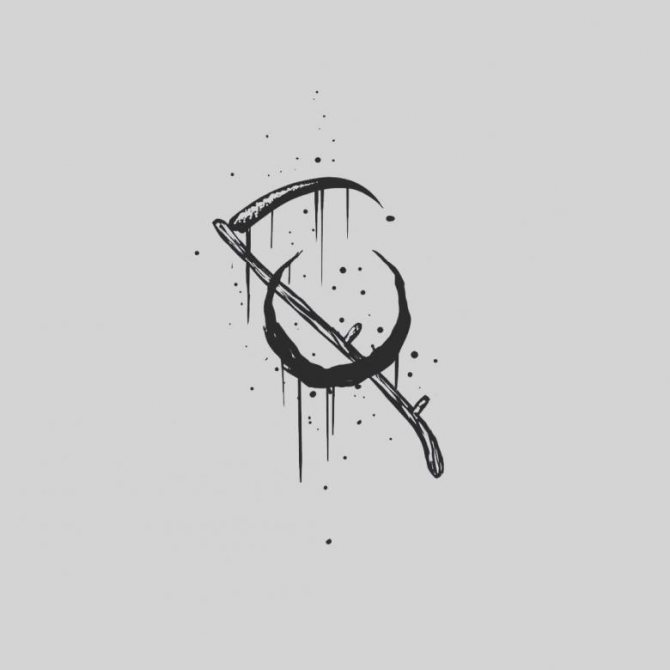

True even need to consider the size of the picture. If you choose the sketch of the death braid tattoo in a miniature version, without problems you can nakolivat on the wrists, ankles, and even fingers.
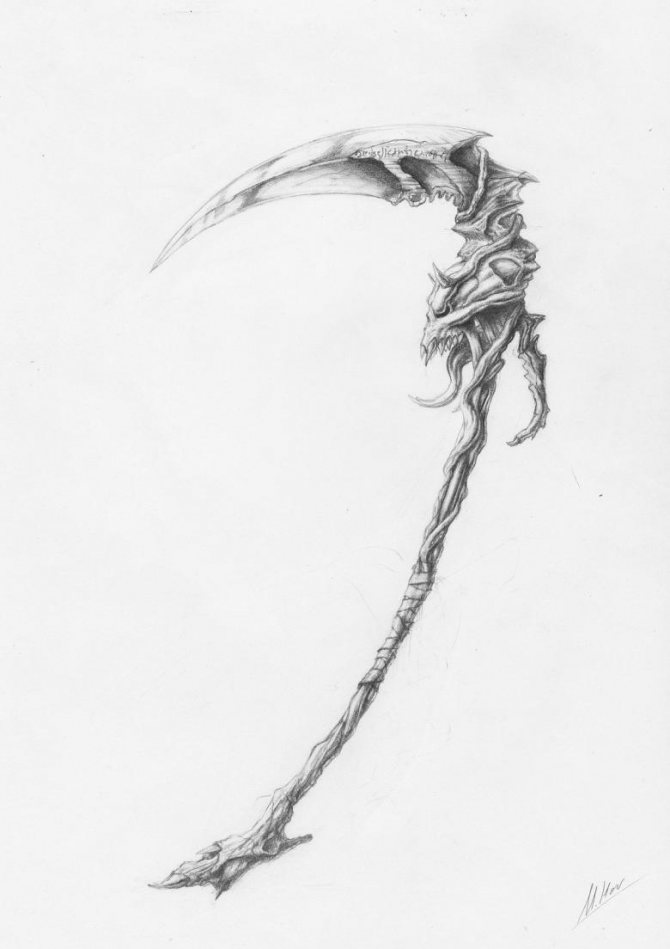

Larger sized tattoos are preferably placed on the back, shoulder or hips. Especially if the pattern is detailed. Pictures hidden by clothes will not cause unwanted questions.
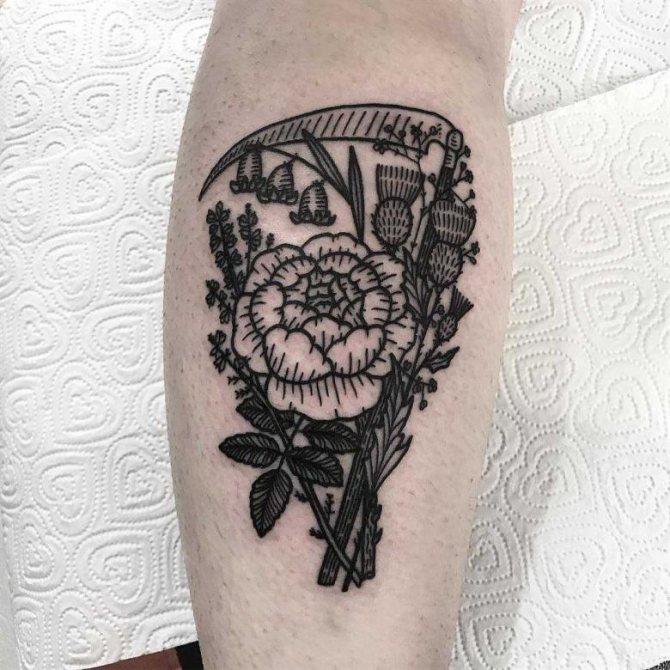

For both sexes will be appropriate to nail the tattoo braid on his arm.
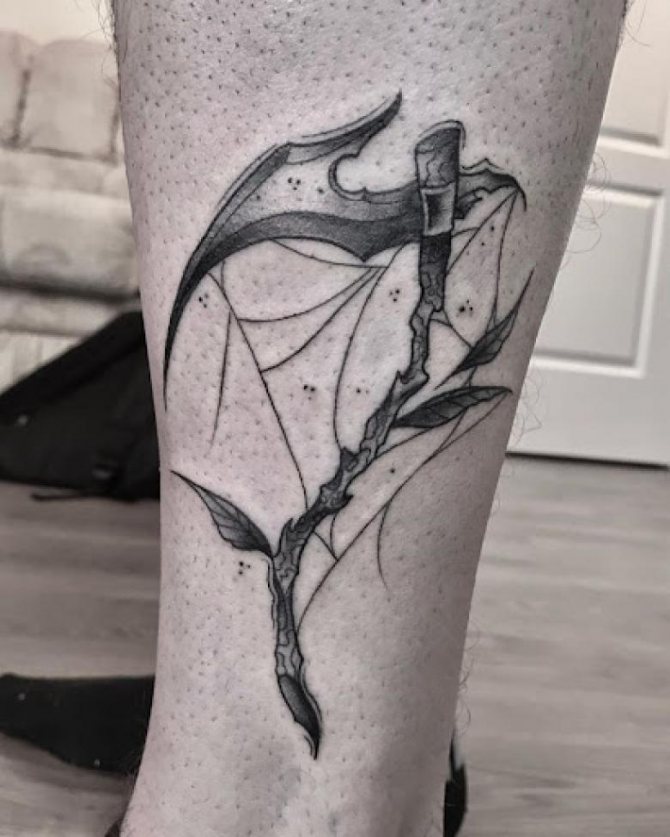

Men more often choose three-dimensional pictures. The tattoo is done on large parts of the body. For example, on the back, shoulder, thigh. Slightly less often in the neck or shoulder blade. In this case, not the entire composition, and parts. There can be only a tattoo with a slant or a face under the mask. According to the experience of tattoo-masters, girls less often risk to stuff a tattoo of a plait on prominent areas, they choose stomach, sides or area above the knees.
The Deadly Harvest
Modern man still can not comprehend all the mysteries of death. What to say about those people who lived a thousand or more years ago. Their whole life was reduced to an agrarian cycle: in spring the seed was planted in the ground, in summer it was threshed, and in fall it was harvested with a sickle and stacked in the barn. The invariable repetition of this cycle led our ancestors to a corresponding analogy. As wheat is cut with a sickle (or scythe), so human lives are cut by the Herald of Death with a sickle.
Here we should also note the second purpose of agricultural implements - a protective one. When the nomads raided the fields of the peasants, they had no choice but to take up their usual tools - scythes and sickles - to defend their homes, their settlement. After all, if they did not protect their crops, the whole clan would starve to death in winter.
Important: Death with a scythe came exactly to the tillers. The nobles believed that an angel from the Kingdom of the Dead would come to them with a sword and armor.
Ancient Deities with Sickles
In pagan religions, the gods of death were also endowed with agrarian implements to shorten human life.
Ancient Egypt. Originally Osiris was the god of fertility and in his arsenal was a chain with a sickle. After he fought against Seth, was killed and resurrected by his wife, Isis, his specialization changed somewhat - he began to rule in the Kingdom of the Dead. However, his former divine attributes remained with him.
Ancient Greece. We all know that Charon, the transporter of souls, took the smallest coin, the obol, for his work. It was put under the dead man's tongue to pay off the servant of the gods. And woe to anyone who did not have a copper penny! Charon mercilessly stripped them of their heads with a sickle and threw them into oblivion.
Ancient Rome. Unlike ancient Greek Cronus, his Roman prototype Saturn had the ability to shorten a human life by his will. He did it by cutting off a mortal's life thread with a sickle. Thus on Earth remained body, mortal shell, and the soul flew to the Underworld Kingdom of Pluto.
Ancient Slavs. Our ancestors also had in their pantheon of gods the Priestess of Death. She was called Morana, Morena, Morzhana, or another name with similar sounding. In addition to her supremacy in the realm of the dead, she was also considered the Goddess of the Moon and was responsible for the phases of the night star. It was the shape of the crescent in phases 1 and 3 that determined the presence of the sickle as an attribute of the formidable Morana.
